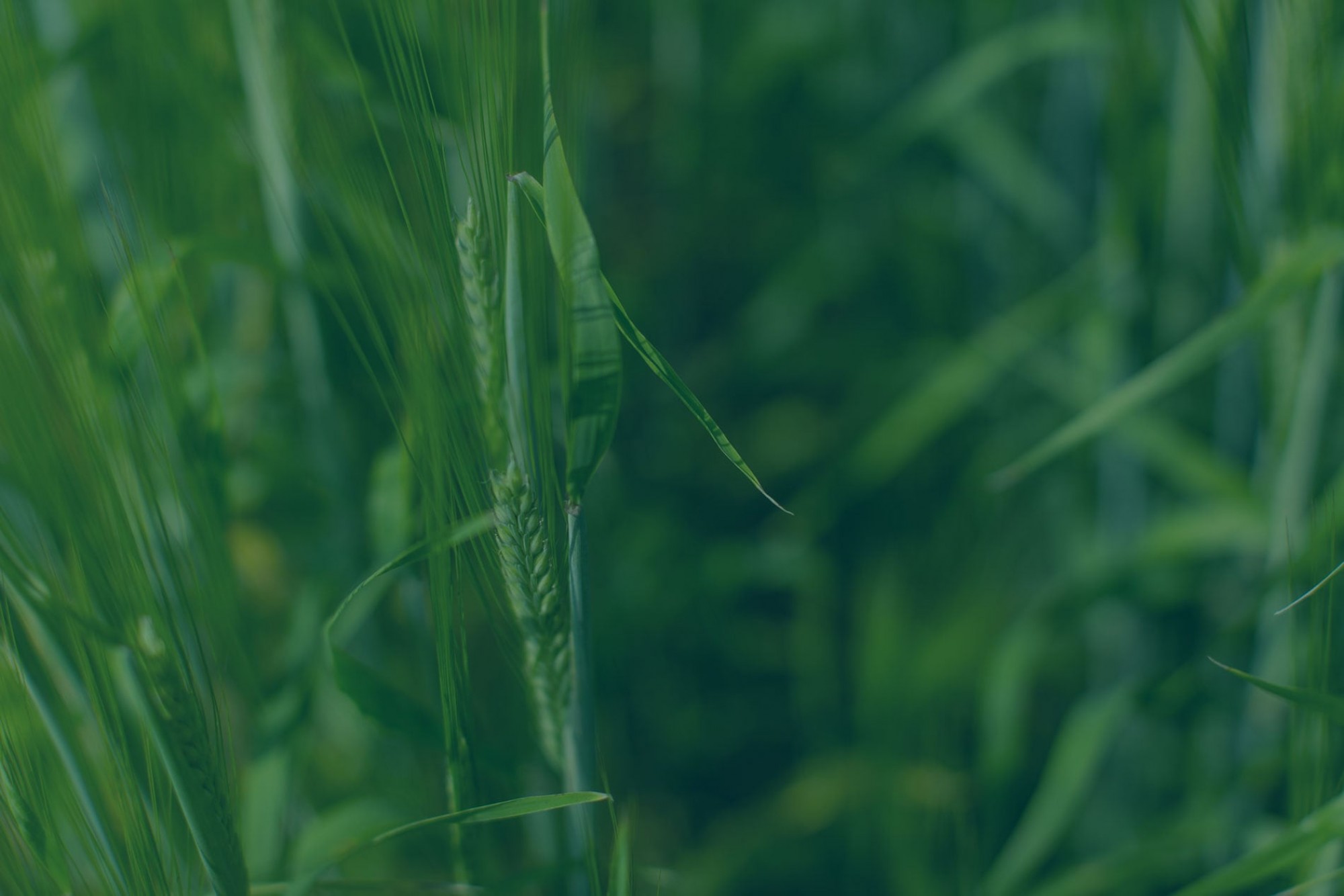Identifying and managing stripe rust
Stripe rust (Puccinia striiformis), also known as yellow rust, is a fungus that can have significant impacts on wheat and barley yields. It can be identified by elongated yellow-orange oval pustules (uredinia) containing spores (uredospores) that run parallel to the leaf veins in wheat (Figure 1 & 2).
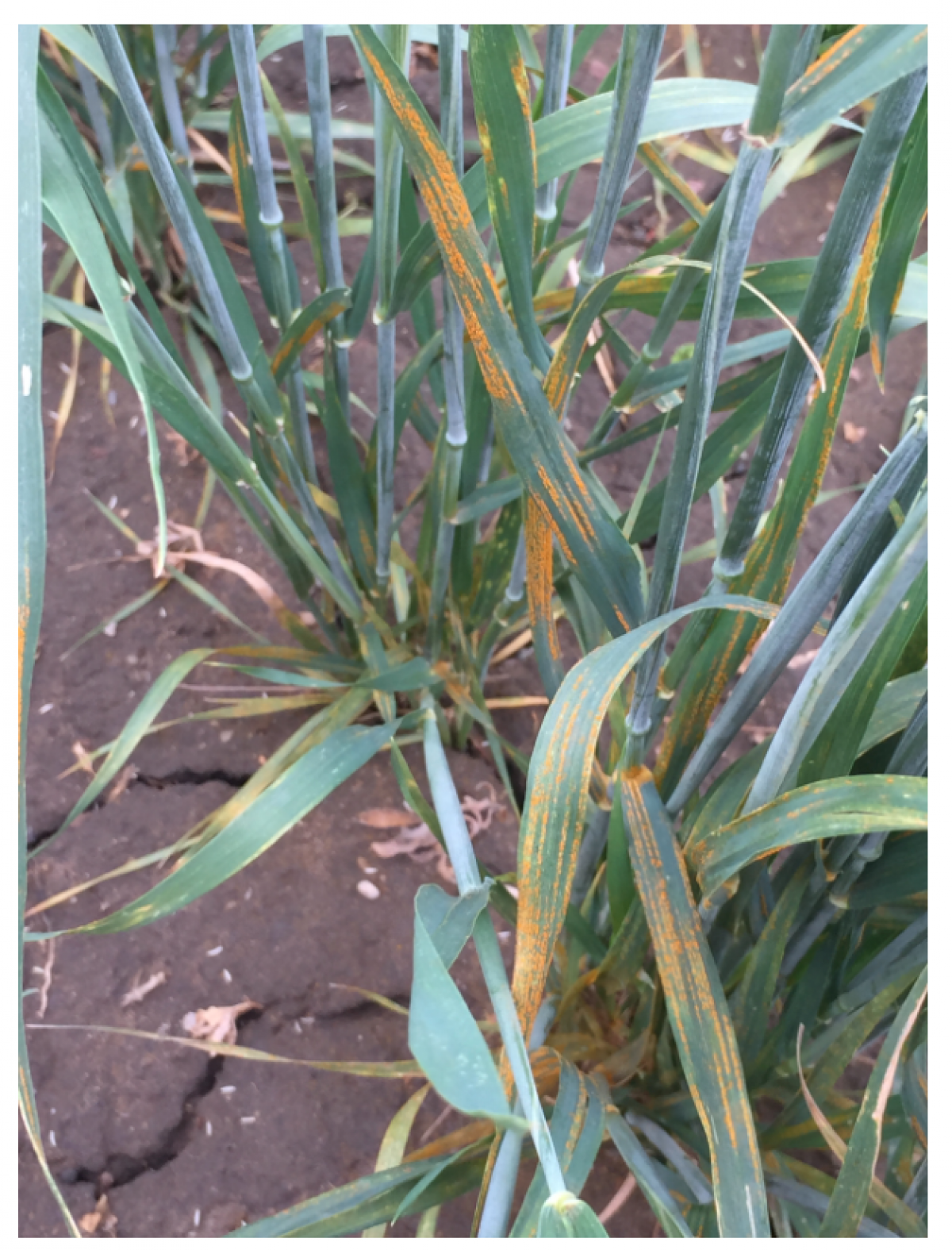
Fig. 1
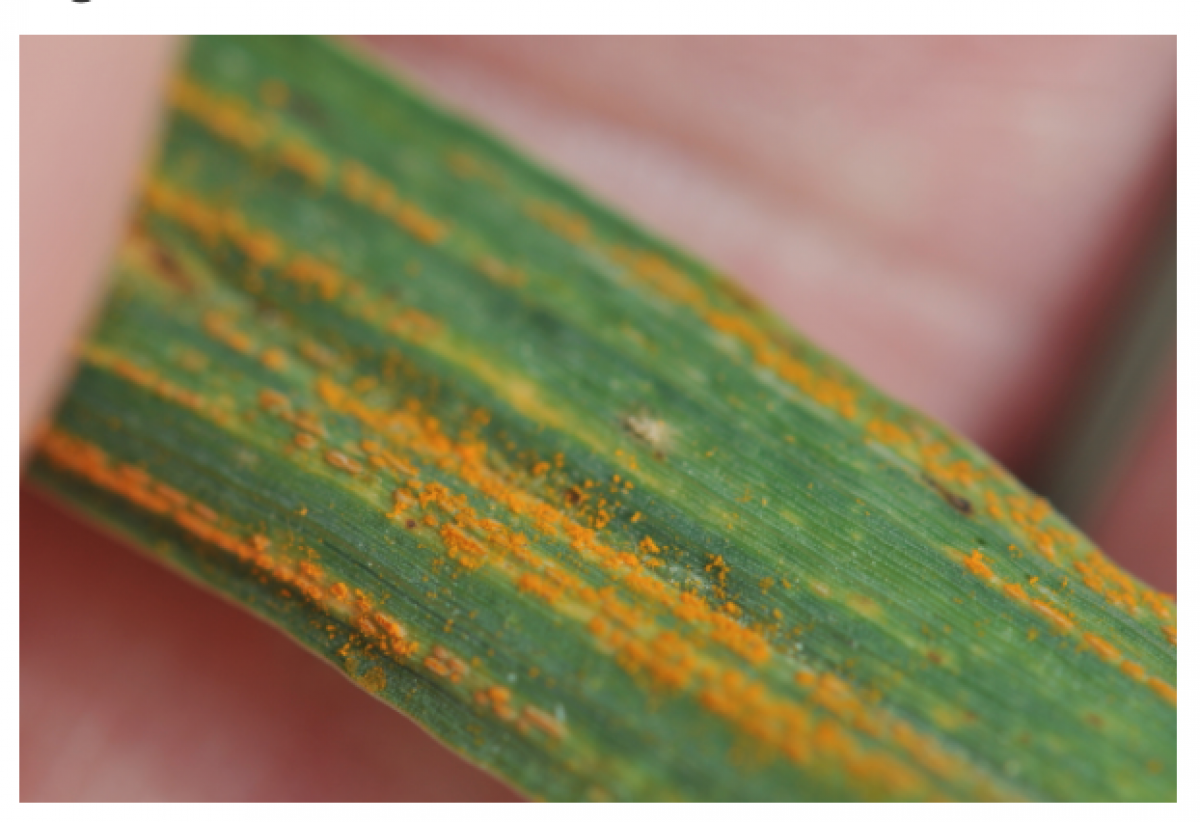
Fig. 2
Seedlings exhibit slightly different symptoms: the rust shows up as patches, not stripes, but can still be characterized by the existence of raised yellow-orange pustules. Stripe rust can also infect the glumes and heads of mature plants, with spores developing in the florets and on the grains. The rust lives inside the leaf tissue, taking nutrients and water from the plant so fewer resources can be directed towards yield and kernel quality. When the fungus produces spores it breaks the leaf surface, further depleting the plant’s water supply. Once stripe rust infection is complete, it moves to the next form of its life cycle, which is characterized by dark brown or black structures (telia) along with the yellow pustules (uredinia). The good news is that the spores produced from these dark-coloured structures (teliospores) cannot re-infect wheat plants.
How can I be sure it’s stripe rust and not something else?
Stripe rust may be mistaken for other rusts, like leaf (rarely found in Alberta) and stem rust (Figure 3). But the three main ways to identify if stripe rust is your culprit include:
- Colour – remember stripe rust right is identified by its yellow-orange colour while leaf and stem rust are both more of a reddish-brick colour.
- Stripe pattern – neither leaf nor stem rust have pustules organized in the tell-tale stripe pattern that stripe rust displays on mature wheat plants.
- Leave-behind colouring to the touch: other diseases, like wheat streak mosaic virus (Figure 4), may exhibit similar yellow colouring organized in stripes, but don’t have raised spore-producing structures. Stripe rust spores, however, will leave a yellow-orange colour on your fingers.
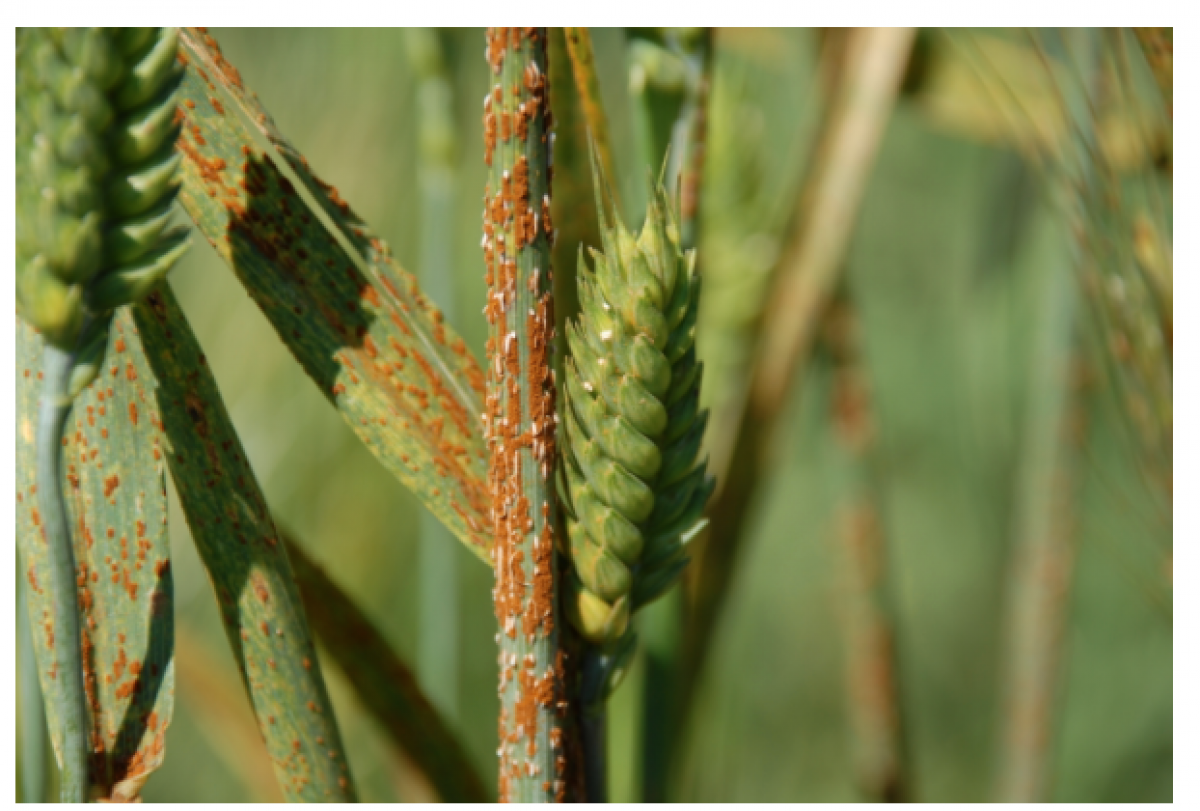
Fig. 3
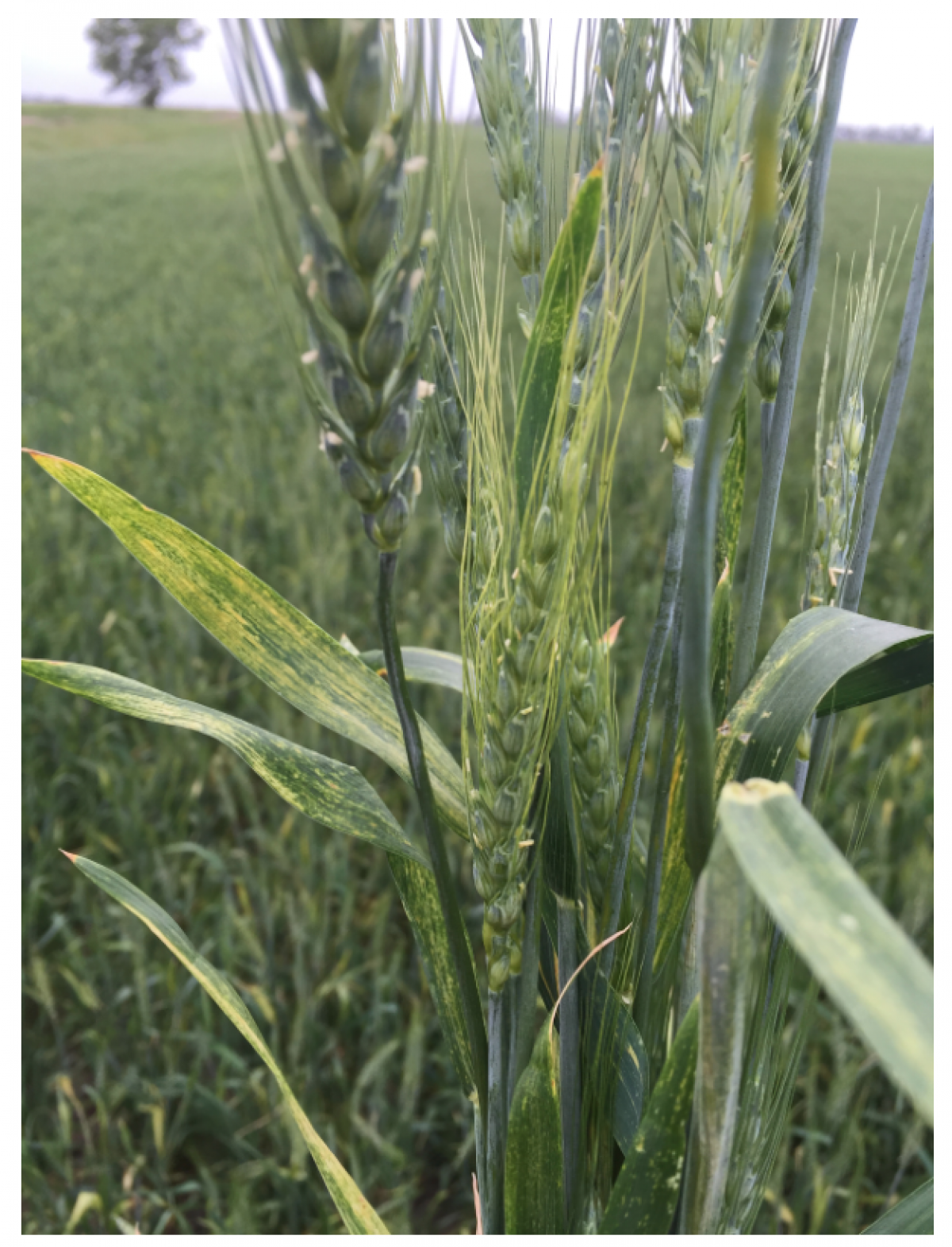
Fig. 4
So I have a stripe rust issue: how can I mitigate it?
You can potentially avoid stripe rust infections by choosing resistant varieties. But if you encounter stripe rust during disease scouting, here are a few management tips to help you decide if fungicide application is right for you, and if so, how it can be applied:
- If you have seeded a moderately resistant to resistant variety, fungicide application would not likely elicit enough of a response to make the application cost effective. Ratings can be found in the Alberta and Saskatchewan seed guides.
- You would more likely see a benefit from fungicide application on susceptible to moderately susceptible varieties.
- Spraying is time sensitive, and ideally should be done before the rust covers more than 5% of the flag leaf surface on 5% of plants in a field. However, fungicide protection of the upper canopy leavesis critical to ensuring adequate grain filling and maximum yield. Refer to our leaf contribution to yield article for information on important leaves to protect.
- There are several options for active ingredients in groups 3, 7 and 11 if spraying is necessary.
- Note fungicides based on strobilurins alone or in a mixture with other groups are not recommended for applications directed towards fusarium head blight suppression. Refer to the Crop Protection guide (Blue Book) for more information regarding products, timing and application instruction.
Currently, the Alberta Wheat Commission is funding four separate research projects looking to help reduce impacts of stripe rust in Alberta and Western Canada which you can learn about on the research page on our website.Through breeding, genomics, management, and virulence identification, we are working to develop continued resistance and achieve better management of this disease.
